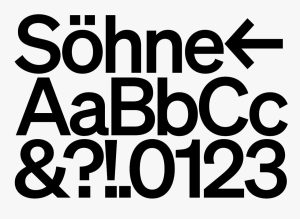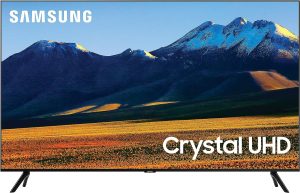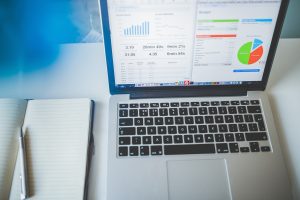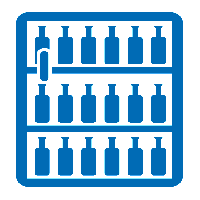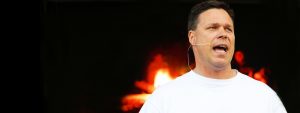It is safe to say that many freelancers work in places in which they have complete freedom to do what they want to get the job done. This delightful freedom also means that they have all the freedom to procrastinate. Distractions are everywhere. We need to get the job done to be paid, and we need to be our own boss and decide when to work and how hard. This is not always easy.
In this blog, I list the top 13 tips I have found to get work done faster. If we get work done faster while offering the same (or better) quality, we can take on more jobs and have a bigger income. I think we all welcome that. The tips are divided into 9 tips you can use during work hours and 4 tips you can use after of before work hours.

Tips to get work done faster that you can use during work hours
So, how can you get your work done faster? Here are 9 tips.
Have a plan
The first things that many blogs trying to help you get work done faster mention is that you need a plan of attack. This plan of attack is a to-do list, which will help you stay focused and stay on track. Drawing up a to-do list, however, is not as easy as it seems. It needs to be realistic and you need to be able to complete it within the amount of time you have available.
In addition, the path needs to be clear. Ask yourself: “What needs to be done next to move this project forward?” Answers include things like planning, making a call, sending an email and creating an outline. Whatever it is, define it and get started.
Sheiresa Ngo says it is smart to do the things on your list you dislike most first. This way you will have more time and energy to tend to the more pleasant tasks. You will work so hard to get the undesirable tasks out of the way that you may even find you have free time to do the things you enjoy outside of work.
Furthermore, do not add too much to the list. As Belle Beth Cooper says, “One of the most counterintuitive but effective methods I have found for increasing my productivity is to limit how many items I add to my to-do list. One way to do this is by choosing one to three Most Important Tasks (MITs). These are the big, tough tasks for your day that you really need to get done. The rest of your to-do list can be filled up with minor tasks that you would like to do, so long as you have prioritized 1–3 MITs. Make sure you work on these before you move on to anything minor, and you will probably find you feel a whole lot more productive at the end of the day.”
Planning the night before also helps to reduce work anxiety. Cooper says that she often ends up in bed thinking about what she needs to do tomorrow, which makes it difficult to sleep. Writing out the to-do list before going to bed helps you to relax and sleep better. In addition, rather than wasting time in the morning deciding what to do first, you can jump straight into the first MIT the next day.
Finally, focus just on the present day. Separate your “today” list from the master list of everything that needs to be done. Each night, move only a couple of things to the to-do list for the next day. This way, you can focus on what needs doing today and dump every little task you think of that needs to be done.
Get through your e-mail faster
You have a new e-mail! And another one. And another one. E-mail can be useful, but it can also be one of the biggest productivity killers around. In order to make e-mail more efficient, Lifehacker offers you a few tips: “First, get to know your e-mail client: learn the shortcuts, learn the advanced features, and definitely learn how to use the search function—it is easier than trying to browse through folders. Get rid of spam so you are not constantly receiving e-mail you do not need. Finally, do not check it too often: set aside some time to check it periodically rather than as you get new messages, and if you can help it, do not check it first thing in the morning. You will get a lot more done.”
Go directly to work
Jonathan Mead claims that the first battle of the day often determines how the rest of the day will play out: “If I can resist the temptation to get sucked into checking email in the morning, I can often get something meaningful accomplished right away. A quick win in the morning sets the right tone for the rest of the day.”
Read faster
As Lifehacker points out, getting through work can be rough if you are a slow reader. Luckily, you can teach yourself to speed read. Try tricks like pointing at the text as you read, looking at the words in the middle of sentences, and stop saying them aloud in your head. You can also try an app that teaches you to speed read.
Boot your computer faster
It only takes a little while to boot up your computer, but it could feel like an eternity. Fortunately, you can do a lot to speed up the process, Lifehacker says. Clean out your start-up items, upgrade your operating system, or tweak your BIOS (maybe not a good idea if your laptop does not have a CD drive, like mine). They emphasize upgrading to an SSD as best solution. Apparently, it will make your computer boot very quickly.
Type faster
You probably type an awful lot every day. I know I do. You can make that work go faster by simply typing faster. If you have to look at the keyboard when you type, some basic typing classes can make you not look down. If you already are a good typist, you can use text expansion for phrases and snippets you type often.
Be decisive
Ngo urges you to be decisive. Once you have made a decision, stick to it. Provided that you have done the proper research, make your choice and resolve to see it through to its completion.
Set boundaries
Ngo also urges you to know when to turn down a project. It is impossible (and exhausting) to be everything to everyone. Set limits. Let people know that your time is valuable and that you must attend to the assignments that are most important first.
Measure your results, not your time
Cooper says: “We want to find methods of being more productive in less time. One way to go about this is to adjust the way we measure productivity. It sounds like a trick, but it is not a way out of getting work done. If you truly measure what you have done, rather than the time it took you, you should notice a difference in how you work.”
This is how it works. If you have big projects or tasks, a good place to start is by breaking them down into completable sections. With a set of smaller tasks making up a big project, you can check off what you have done each day, even if it takes you many days to finish the whole thing. Another way to measure what you have done each day is to keep a done list. You might be surprised how much more motivated you are to do work that matters and get lots done.
Tips to get work done faster that you can use after or before work hours
Now you know all these things you can do during work hours to get work done faster. However, you can also do some things before and after work that make you more productive during the day. Here are 4 tips.
Build “getting ready to work” routines
Getting started seems to be a common hurdle. Cooper states that one way to make it easier to get started is by building a routine that tells your brain and body it is time to work. Your routine could be something as simple as your daily commute or grabbing a coffee on the way to work. Other ways to get into a working mindset can include sitting down at your desk or workspace, turning off your phone or putting it away, exercising, stretching, or eating breakfast. You could even have an album or playlist that gets you in the mood to work and listen to that as part of your routine.
Get dressed faster
Mark Zuckerberg does not have to think about what he is going to wear to work every day. He simply wears the same outfit every day. He says: “I really want to clear my life so that I have to make as few decisions as possible about anything except how to best serve this community. I feel like I am not doing my job if I spend any of my energy on things that are silly or frivolous about my life, so that way I can dedicate all of my energy towards just building the best products and services.”
If you do not feel like repeatedly wearing the same outfit, you can use these funny tips. You can tie your shoes in just a few seconds by using the Ian Knot instead of a more traditional tie. Please view the video above for instructions. Similarly, if your underwear bunches up when you pull on your pants, you can put your underwear in your pants first, and then pull everything on in one fell swoop. If your zipper is not cooperating, use these tips.
Build habits to help you stop working
In addition to a “getting started” routine, you may need a “stopping” routine. As Cooper says: “It can sometimes be too easy to just keep going for another hour, or to get your computer out after dinner and get stuck working until well after bedtime. There are a few ways to switch yourself off at home and leave work behind.” These include quitting while you are ahead, setting a firm cut-off time, planning something for after work and creating a wind-down routine.
Fall asleep faster
Sleep is a very necessary element of preparing your body for productivity. If you have troubles falling asleep, you can do a few things to help the process along. As Lifehacker says, get the lighting in your room right, create a good evening routine, and stay away from computer or gadget screens before bed. You can also train yourself to fall asleep faster if it is a regular issue, which you can learn here.
Business & Finance Articles on Business 2 Community(90)
Report Post
